- Home
- Cao Xueqin
The Story of the Stone
The Story of the Stone Read online
THE STORY OF THE STONE
A CHINESE NOVEL BY
CAO XUEQIN
IN FIVE VOLUMES
*
VOLUME IV
‘THE DEBT OF TEARS’
*
TRANSLATED BY JOHN MINFORD
EDITED BY GAO E
PENGUIN BOOKS
Contents
NOTE ON SPELLING
PREFACE
CHAPTER 81
Four young ladies go fishing and divine the future; Bao-yu receives a homily and is re-enrolled in the Family School
CHAPTER 82
An old pedant tries to instil some Moral Philosophy into his incorrigible pupil; And the ailing Naiad, in a nightmare, confronts the spectres of her fevered mind
CHAPTER 83
An Indisposition in the Imperial Bedchamber calls for a Family Visitation; While insubordination in the inner apartments reveals Bao-chai’s long-suffering nature
CHAPTER 84
Bao-yu is given an impromptu examination, and his betrothal is discussed for the first time; Jia Huan visits a convulsive child, and old hostilities are resumed
CHAPTER 85
It is announced that Jia Zheng has been promoted to the rank of Permanent Secretary; And it is discovered that Xue Pan has once more brought upon himself the threat of exile
CHAPTER 86
Bribery induces an old mandarin to tamper with the course of justice; And a discourse on the Qin provides a young lady with a vehicle for romantic feelings
CHAPTER 87
Autumnal sounds combine with sad remembrances to inspire a composition on the Qin; And a flood of passion allows evil spirits to disturb the serenity of Zen
CHAPTER 88
Bao-yu gratifies his grandmother by praising a fatherless child; Cousin Zhen rectifies family discipline by chastising two unruly servants
CHAPTER 89
Our hero sees the handiwork of a departed love, and is moved to write an ode; Frowner falls prey to hysterical fear and resolves to starve to death
CHAPTER 90
A poor girl loses a padded jacket and puts up with some obstreperous behaviour; A young man accepts a tray of sweetmeats and is put out by some devious goings-on
CHAPTER 91
In the pursuance of lust, Moonbeam evolves an artful stratagem; In a flight of Zen, Bao-yu makes an enigmatic confession
CHAPTER 92
Qiao-jie studies the Lives of Noble Women and shows a precocious enthusiasm for Virtue; Jia Zheng admires a Mother Pearl and reflects on the vicissitudes of Life
CHAPTER 93
A Zhen retainer seeks shelter in the Jia household; And shady activities are revealed behind the Iron Threshold
CHAPTER 94
Grandmother Jia gives a crab-blossom party – a celebration of the ominous; Bao-yu loses his Magic Jade – a strange disappearance of the numinous
CHAPTER 95
A rumour comes true and the Imperial Consort passes away; A counterfeit is deceptively like the real thing, and Bao-yu loses his wits
CHAPTER 96
Xi-feng conceives an ingenious plan of deception; And Frowner is deranged by an inadvertent disclosure
CHAPTER 97
Lin Dai-yu burns her poems to signal the end of her heart’s folly; and Xue Bao-chai leaves home take part in a solemn rite
CHAPTER 98
Crimson Pearl’s suffering spirit returns to the Realm of Separation; And the convalescent Stone-in-waiting weeps at the scene of past affection
APPENDIX I Prefaces to the first Cheng-Gao edition Joint Foreword to the subsequent Cheng-Gao edition
APPENDIX II The Octopartite Composition or ‘bagu wenzbang’
APPENDIX III The Qin or Chinese Lute, and Knowing the Sound
APPENDIX IV Iron Threshold Temple and Water-moon Priory
CHARACTERS IN VOLUME 4
GENEALOGICAL TABLES
PENGUIN CLASSICS
THE STORY OF THE STONE
VOLUME IV
CAO XUEQIN (?1715–63) was born into a family which for three generations held the office of Commissioner of Imperial Textiles in Nanking, a family so wealthy that they were able to entertain the Emperor Kangxi four times. But calamity overtook them and their property was confiscated. Cao Xueqin was living in poverty near Peking when he wrote his famous novel The Story of the Stone (also know as The Dream of the Red Chamber), of which this is the fourth volume. The first three volumes, The Golden Days, The Crab-Flower Club and The Warning Voice, translated by David Hawkes, and volume five, The Dreamer Wakes, translated by John Minford, are also published in Penguin Classics.
GAO E (?1740–1815) was a Chinese Bannerman of the Bordered Yellow Banner, who for the last twenty years of his life worked in the Grand Secretariat and the Censorate in Peking. In 1792 he and his friend Cheng Weiyuan published for the first time a complete version of The Story of the Stone in 120 chapters. Previously, handwritten copies of the novel had circulated, which ended with the eightieth chapter. Cheng and Gao claimed that they edited the last forty chapters of their complete version from a fragmentary manuscript by the original author.
JOHN MINFORD was born in 1946. He studied Chinese at Oxford and at the Australian National University, and has taught in China, Hong Kong and New Zealand. He has edited (with Geremie Barmé) Seeds of Fire: Chinese Voices of Conscience, and (with Joseph S. M. Lau) Chinese Classical Literature: An Anthology of Translations. He is currently translating the Strange Tales of Pu Songling (1640–1715), Sunzi’s The Art of War, and the Martial Arts fiction of the contemporary Hong Kong novelist Louis Cha (Jin Yong).
FOR RACHEL
Note On Spelling
Chinese proper names in this book are spelled in accordance with a system invented by the Chinese and used internationally, which is known by its Chinese name of Pinyin. A full explanation of this system will be found overleaf, but for the benefit of readers who find systems of spelling and pronunciation tedious and hard to follow a short list is given below of those letters whose Pinyin values are quite different from the sounds they normally represent in English, together with their approximate English equivalents. Mastery of this short list should ensure that names, even if mispronounced, are no longer unpronounceable.
c = ts
q = ch
x = sh
z = dz
zh = j
CHINESE SYLLABLES
The syllables of Chinese are made up of one or more of the following elements;
1. an initial consonant (b.c.ch.d.f.g.h.j.k.l.m.n.p.q.r. s.sh.t.w.x.y.z.zh)
2. a semivowel (i or u)
3. an open vowel (a.e.i.o.u.ü), or
a closed vowel (an.ang.en.eng.in.ing.ong.un), or
a diphthong (ai.ao.ei.ou)
The combinations found are:
3 on its own (e.g. e, an, ai)
1+ 3 (e.g. ba, xing, hao)
1+2 + 3 (e.g. xue, qiang, biao)
INITIAL CONSONANTS
Apart from c = ts and z = dz and r, which is the Southern English r with a slight buzz added, the only initial consonants likely to give an English speaker much trouble are the two groups
j q x and zh ch sh
Both groups sound somewhat like English j ch sh; but whereas j q x are articulated much farther forward in the mouth than our j ch sh, the sounds zh ch sh are made in a ‘retroflexed’ position much farther back. This means that to our ears j sounds halfway between our j and dz, q halfway between our ch and ts, and x halfway between our sh and s; whilst zh ch sh sound somewhat as jr chr shr would do if all three combinations and not only the last one were found in English.
SEMIVOWELS
The semivowel i ‘palatalizes’ the preceding consonant: i.e. it makes a y sound after it like the i in onio
n (e.g. Jia Lian) The semivowel u ‘labializes’ the preceding consonant: i.e. it makes a w sound after it, like the u in assuages (e.g. Ning-guo)
VOWELS AND DIPHTHONGS
i. Open Vowels
a is a long ah like a in father (e.g. Jia)
e on its own or after any consonant other than y is like the sound in French œuf or the er, ir, ur sound of Southern English (e.g. Gao E, Jia She)
e after y or a semivowel is like the e of egg (e.g. Qin Bang-ye, Xue Pan)
i after b.d.j.l.m.n.p.q.t.x.y is the long Italian i or English ee as in see (e.g. Nannie Li)
i after zh.ch.sh.z.c.s.r. is a strangled sound somewhere between the u of suppose and a vocalized r (e.g. Shi-yin)
i after semivowel u is pronounced like ay in sway (e.g. Li Gui)
o is the au of author (e.g. Duo)
u after semivowel i and all consonants except j.q.x.y is pronounced like Italian u or English oo in too (e.g. Bu Gu-xiu)
u after j.q.x.y and ü after 1 or n is the narrow French u or German ü, for which there is no English equivalent (e.g. Bao-yu, Nü-wa)
ii. Closed Vowels
an after semivowel u or any consonant other than y is like an in German Mann or un in Southern English fun (e.g. Yuan-chun, Shan Ping-ren)
an after y or semivowel i is like en in hen (e.g. Zhi-yan-zhai, Jia Lian)
ang whatever it follows, invariably has the long a of father (e.g. Jia Qiang)
en, eng the e in these combinations is always a short, neutral sound like a in ago or the first e in believe (e.g. Cousin Zhen, Xi-feng)
in, ing short i as in sin, sing (e.g. Shi-yin, Lady Xing)
ong the o is like the short oo of Southern English book (e.g. Jia Cong)
un the rule for the closed u is similar to the rule for the open one: after j.q.x.y it is the narrow French u of rue; after anything else it resembles the short oo of book (e.g. Jia Yun, Ying-chun)
iii. Diphthongs
ai like the sound in English lie, high, mine (e.g. Dai-yu)
ao like the sound in how or bough (e.g. Bao-yu)
ei like the sound in day or mate (e.g. Bei-jing)
ou like the sound in old or bowl (e.g. Gou-er)
The syllable er is a sound on its own which does not fit into any of the above categories. It sounds somewhat like the word err pronounced with a strong English West Country accent, (e.g. Bao Er).
Preface
Mid-January in Peking should be bitterly cold. But this turned out a warm, sunny day, more like spring than winter. It was a Sunday, and families were walking in the streets, strolling through Beihai Park, skating on the lakes. North of the broad avenue running along the site of the old northern wall of the Imperial City is an area of small lanes, or hutongs, which still retains something of the atmosphere of seclusion it had during the Qing dynasty, when princes and wealthy Bannermen had their palaces here, and it was a ‘poetical, cultivated, aristocratic, elegant, delectable, luxurious, opulent locality’, a sort of Manchu Kensington.
Skirting the west bank of the lake called Shichahai, I came to a point where five or six of these lanes intersected, and stopped for a moment to try and get my bearings. In those mazes of bare, grey walls it is the easiest thing to get lost, even if you know exactly where you are going. And I only knew that I was looking for a palace, and that it lay vaguely somewhere in this north-west corner of the old Tartar City. A friend had, the previous evening, described the whole expedition as foolishly romantic, doomed to failure, in a country where everything happens either as the result of some elaborate bureaucratic procedure, or through some privately arranged back-door.
Squatting by one of the walls, I took a little book from my knapsack. This book, published recently, expounds the view of one of the most eminent Stone-scholars, Zhou Ruchang, that Cao Xueqin’s Rong-guo Mansion and Prospect Garden were in some sense based on the site of the palace I was looking for. This palace at one time belonged to Qianlong’s favourite Heshen (1750–99). It was then bestowed in turn upon various princes, the most famous of whom was Prince Gong (1833–98), younger brother of the Xianfeng Emperor and doyen of Chinese foreign relations in the second half of the nineteenth century. In the 1930s, the palace was bought by Furen Catholic University. Studying the little sketch map at the front of Zhou’s book, I found it hard to superimpose its eighteenth-century topography on to the crude tourist street-plan I had with me, and harder still to relate the two to the anonymous walls before me. I was just beginning to give up, when a voice shouted ‘Firecrackers for sale!’ about six inches from my ear. I looked up and saw an old man smiling down at me. ‘Looking for Prince Gong’s palace?’ he asked, pointing at the cover of my book. ‘It’s right in front of you.’ He gestured along one of the many walls. But I had just come from there, and remembered seeing nothing but a block of large institutional fifties-style buildings, and a forbidding gateway through which I had glimpsed only buses, a few limousines and a long red screen-wall with some faded revolutionary slogan peeling from it.
The old man ignored my doubtful reaction and started off in the direction in which he had just pointed, clearly intending me to follow him. Several firecracker-sales later, he deposited me at the very same forbidding gateway. This time I read the writing: ‘Chinese Academy of Music’, inscribed vertically on the right-hand side. I shook my head at the old man again in disbelief. This was not what I had come to find. He assured me that this was the place, made a vigorous gesture in the direction of the screen-wall, which seemed to mean ‘on the other side of that’, and set off at a great pace, to sell more firecrackers.
Half an hour later, having with great difficulty convinced an unsympathetic gateman that I was not a spy, and having left my bundle of books in his lodge, I was allowed to wander in on my own, in search of my palace. Once I had negotiated the screen-wall, to my amazement I saw before me, set among utilitarian classroom buildings, ‘two great stone lions, crouched one on each side of a gateway’. Inside this outer gateway was indeed a ‘raised stone walk running up to the main gate’. Here was the palace, embedded in its modern surroundings like a jewel set in concrete.
It took me only five minutes of exploration to understand why some scholars have been led to see a connection between this palace and the Jia mansion in The Stone (a connection denied with equal emphasis by another school of scholars). The lay-out is so similar (‘Grandmother Jia’s courtyard’, for example, is exactly where it should be in relation to the rest of the buildings), the architectural style and scale are so exactly what one would have expected, grand but in exquisite taste. Does it ultimately matter whether Cao Xueqin ‘in fact’ modelled his fiction on this reality, or whether those who lived here modelled their ‘reality’ on Cao’s fiction? After all, as Cao himself wrote:
Truth becomes fiction when the fiction’s true;
Real becomes not-real where the unreal’s real.
What struck still deeper than these resemblances was the discovery – which came soon afterwards – that this marvellous building was being lived in by the very same kind of people – musicians, artists, dreamers – as those whose aspirations were voiced in The Stone. As I emerged from one of the long passageways connecting different parts of the palace, the sound of the two-stringed fiddle, played with passion and melancholy, wafted into the sunlit courtyard in front of the Hall of Auspicious Joy. And later, the same young musician began to play on the piano, with feeling and lightness of touch, a set of Mozart piano variations. Just as The Stone has over the years miraculously survived the assaults of ideology and intellect, so this palace has come through two hundred of the most turbulent years in Chinese history unscathed, and is still very much a living place – though it seems ultimately destined to become a museum. Palace and novel still perpetuate the same dream.
The garden to the north of the palace is not accessible from the Academy of Music. To reach it, you have to walk out again into the street, turn left, and follow the wall round to another gateway belonging to another institution, to the
north-east. It was late in the afternoon by the time I reached this gate. Anxious to see the garden before dark, and slightly inebriated by my success in entering the palace alone, I did not bother this time to make my presence known at the lodge, but walked boldly in. I could just see in the distance what looked like a tall rockery, and had quickened my step, when I was rudely arrested by a woman’s voice. It was no fairy either, come to complain of the arrival of some disgusting creature to pollute her pure maidenly precincts, but an extremely aggressive old lady carrying a large green kettle, who informed me that I had no right to come poking my nose in there, that I had better get out at once, and who was I anyway? I said nothing in reply, but hurried back to the lodge. There I was lucky to find a smiling and rather sleepy old man on duty, who assured me that there was no harm in my going in, and that I should tell anyone who asked that I had his permission. He then withdrew into his cosy little room and went back to the afternoon’s Peking Opera broadcast.
In mid-winter, the prince’s garden has a desolate charm. Entering it, I felt, even more than with the palace, that I was entering a world of vanished romance, a lost domain. The past, the world of illusion and dreams, hung heavily, almost stiflingly, in the air. Finding a gap in the eastern end of the extended artificial mountain which runs all the way along its southern side, I clambered up through weirdly shaped stones to a vantage point from which the first buildings were visible. Directly below, a moon-window gave on to a little partly dilapidated courtyard, withered creepers rambling over its cloister. Over to the left, at the foot of the ‘mountain range’, stood a small octagonal pavilion, and beyond it a pond (drained of water). On the far side of the pond stretched more miniature mountains and buildings. Looking down, I estimated the total area of the garden at two or three acres – far smaller than I had imagined Prospect Garden to be. But a sense of great space was created by the subtle disposition of the landscape elements. It was a masterpiece of imaginative design.

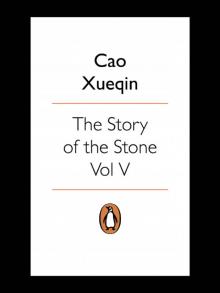 The Dreamer Wakes
The Dreamer Wakes The Warning Voice
The Warning Voice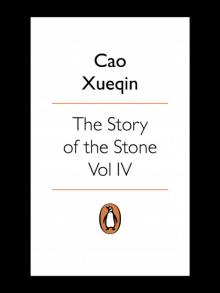 The Debt of Tears
The Debt of Tears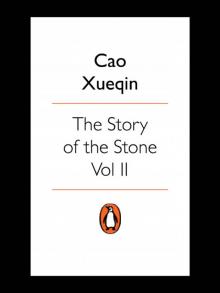 The Crab-Flower Club
The Crab-Flower Club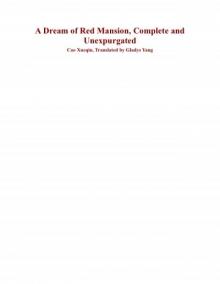 A Dream of Red Mansion
A Dream of Red Mansion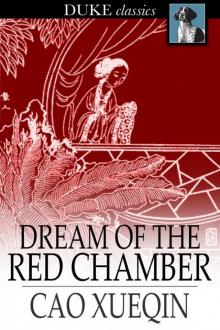 The Dream of the Red Chamber (Selection)
The Dream of the Red Chamber (Selection)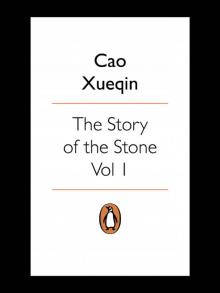 The Golden Days
The Golden Days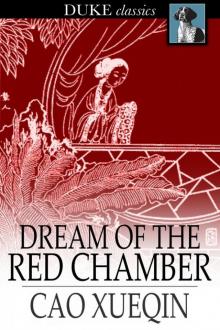 The Dream of the Red Chamber
The Dream of the Red Chamber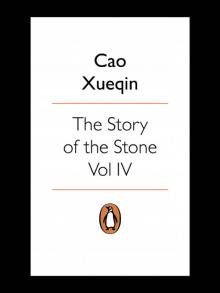 The Story of the Stone
The Story of the Stone